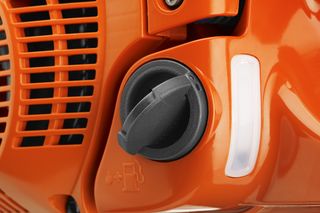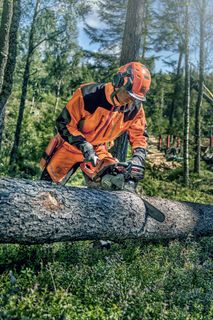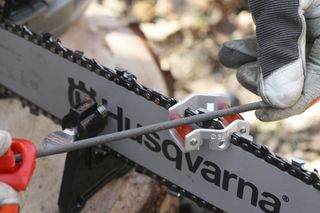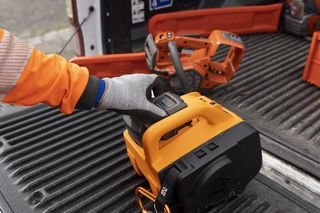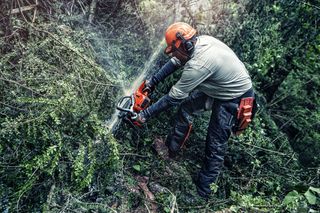
How-To's & Guides
How to make a directional notch
Other directional notch methods
Open-face directional notch with larger opening angle
- Flat and sloping terrain
- Directional notch opening more than 70°
- The bottom cut is angled downwards from the felling cut
- The felling cut in line with or slightly above the level of the directional notch
- The hinge remains intact until the tree hits the ground
- Higher stump height

Inverse directional notch, "Humboldt"
- Thicker trees on steep slopes
- Directional notch opening at least 45°
- Horizontal cut has the same angle as the felling cut
- The felling cut is slightly above level of the directional notch
- Good for tree types susceptible to splitting
- Low stump height

Another open face directional notch felling technique

Aim with the bottom cut
- Keep the guide bar horizontal in the desired stump height.
- Aim at a point further forward in the terrain where you want the tree to fall. The directional target must match the saw’s felling direction markings (lines).
- Start by sawing at full throttle while checking the direction.
- When felling thicker trees it may be necessary to supplement the top and bottom cuts from the opposite side, depending on guide bar length.
- Saw the top cut so that it meets the bottom cut precisely. If the top and bottom cuts do not meet exactly, you will not have sufficient control over the felling.
Open-face directional notch
- Flat or slightly sloping terrain
- Directional notch opening 45–55°
- Bottom cut first, determines the direction
- The bottom cut is sawn horizontally at an angle to the felling cut
- Felling cut above level of directional notch
- Low stump height
- The hinge breaks before the tree hits the ground
- Harder to see the hinge width
- Risk of splitting where the fibres in the root protrusions are asymmetric

Related articles
Showing 10 of 140

